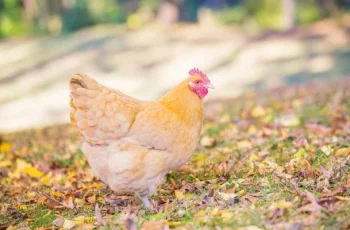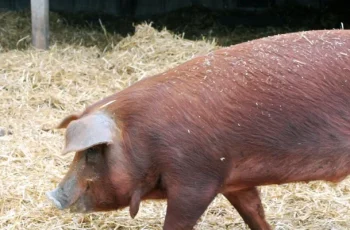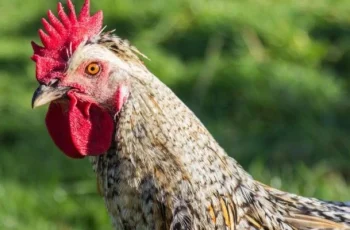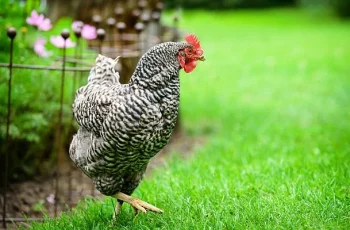Origins and Development
Buff Orpington chickens were developed in the late 1800s by William Cook in England. Aiming for a hardy, dual-purpose breed, he crossed Minorcas, Langshans, and Plymouth Rocks, creating a bird suited to both meat and egg production. Their gentle temperament and reliable laying ability made them popular across Europe and North America.

Recognizable Features
Buff Orpingtons are large, plump chickens with soft, golden feathers. They have a broad chest, short back, and a medium-sized single comb. Their pale pinkish-white legs and warm-toned plumage make them a striking addition to any flock.
Behavior and Temperament
Known for their docile nature, Buff Orpingtons are affectionate and easy to handle, making them great for families. They integrate well with other peaceful breeds and adapt to both confinement and free-ranging.
Egg-Laying and Broodiness
Hens lay 200-280 large brown eggs annually, maintaining productivity even in colder months. However, they have a strong broody tendency, which can be beneficial for hatching chicks but may require management for those focused on egg collection.
Housing and Environmental Needs
These chickens require spacious coops—at least 4-5 square feet per bird indoors and 10-15 square feet outdoors. Their thick feathering helps in cold climates but can cause heat stress in summer, making shade and ventilation essential.
Diet and Nutrition
A high-quality layer feed (16-18% protein) supports egg production and health. Supplementing with greens, grains, and protein sources like mealworms ensures a balanced diet. Grit aids digestion, and crushed oyster shells strengthen eggshells.
Health Considerations
Buff Orpingtons are prone to obesity due to their love of food. Regular activity helps prevent weight-related issues. Their dense feathers make them susceptible to mites and lice, so routine dust baths and coop maintenance are essential. In winter, petroleum jelly can prevent frostbite on combs and wattles.
Compatibility with Other Breeds
These birds thrive in mixed flocks with docile breeds like Cochins, Sussex, and Australorps. However, they may be bullied by aggressive breeds like Rhode Island Reds. Gradual introductions and multiple feeding stations ease integration.
Breeding and Raising Chicks
Buff Orpington hens make excellent mothers, diligently incubating eggs for 21 days. Chicks require a warm brooder and a high-protein starter feed for proper growth until transitioning to adult feed at 16 weeks.
Sustainable Farming Benefits
As a dual-purpose breed, Buff Orpingtons provide both eggs and meat, making them valuable for self-sustaining farms. Their foraging habits contribute to pest control and soil enrichment, further enhancing their role in sustainable agriculture.

Final Thoughts
Buff Orpingtons are ideal for backyard flocks due to their gentle nature, high egg yield, and adaptability. Whether for companionship, egg production, or sustainable farming, they offer a rewarding poultry-keeping experience. With proper care, these golden-feathered birds will thrive for years to come.



